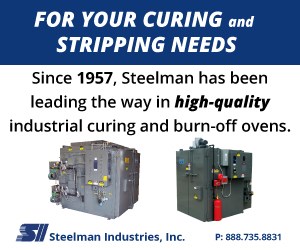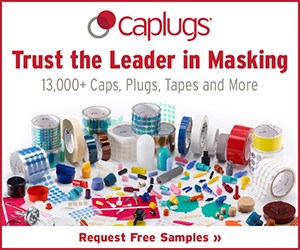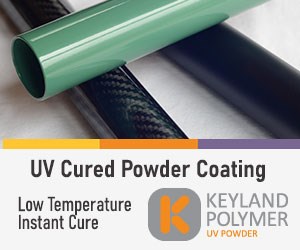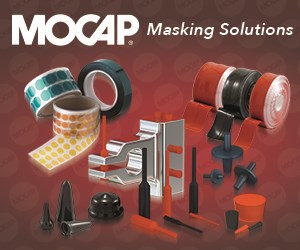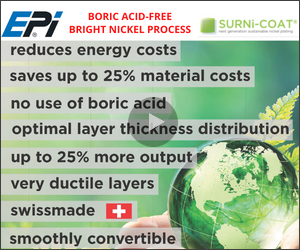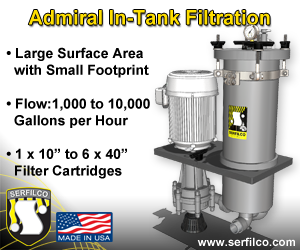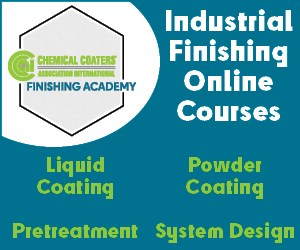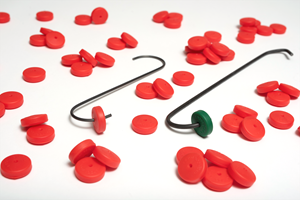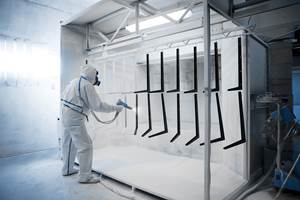How to Increase Line Density
Q. Our finishing shop applies both liquid and powder applications, as well as some plating, too. How can we increase our racking line density by adding more parts per foot? Racking expert Scott Rempala has the answer.
Q. Our finishing shop applies both liquid and powder applications, as well as some plating, too. How can we increase our racking line density by adding more parts per foot?
A. For racking in any coating application—my apologies to Stephen Hawking for being cheeky here—I suggest you consider space and time. Density is vital to any industrial coating operation that wants to operate profitably. However, simply packing as many parts into available space should be measured by considerations for each coating method.
When discussing spatial considerations, consider the actual dimensional space by which you coat a part. For plating and electrocoating, it is typically the size of tank. For liquid and powder coating, it is the opening in the spray booth or the “working window.” There are additional limits within this space and unfortunately, those limitations lie within the technologies themselves.
In plating, the limitation —in this case, the tank—is a derivative of current density (not to be confused with rack density), or the ratio of the current supplied to surface area of the parts being plated.
If current density is not evenly distributed among all parts on the plating rack, you will get variations in the amount of deposition. If parts are not appropriately positioned toward the anode, then areas of the part will be “shielded” and the parts will receive uneven deposition.
Additionally, some platers must consider proper gas release. Gas is typically created during the chemical reactions in the plating cycle, and if parts are not racked properly, gas can become entrapped under shoulders, recesses and holes preventing the plating solution from coming into contact with the part, therefore causing a plating defect.
For liquid and powder coating, space is defined as the working window, or in other words, the available dimensions within the opening of the coating booth that parts can travel free from obstruction through the entire conveyor line—or with a batch system, placed within the booth.
Maximizing this window space has two main benefits: first, maximizing throughput, and second, maximizing First Pass Transfer Efficiency (FPTE), which, like current density, is defined as the ratio of coating applied versus the amount sprayed.
If Stephen Hawking were a coater, he would likely agree that electrostatic coating has inherent spatial limitations as well. Due to, yes, you guessed it … physics! For instance, parts racked too close together will create electrostatic interference with each other and will likely “rob” coating from one another. This phenomenon, similar to the Faraday Cage Effect, leads to uneven coating thickness. Additionally, parts racked too close to the rack elements may be interfered with or “shielded” from proper electrostatic application.
Optimum line density in a powder coating system is about 50 percent of the projected area of envelope. For spacing of larger parts with depth, like electrical boxes, you should space 2.5 times the depth dimension on a fully automatic gun system, although in some cases, 1.5 times may be sufficient.
Additional considerations that apply to all coating technologies, such as proper drainage and part security, are also important. The pooling of pretreatment solutions or coating material on the recesses of a part—or “bucketing” when a part releases liquids or coating onto the part below—are usually bad. Parts that are not secured properly on the rack and end up somewhere else in the coating system will result in lost opportunity. And finally, accidental bumping of a neighbor may be excused at a concert, but won’t be for parts on a rack.
For Stephen Hawking, time may be abstract; for industrial coating, it is anything but. Paying attention to specific elements of time as they relate to racking is a good practice. When considering increasing density, you should be looking at the time it takes to properly rack the parts.
Can the operator keep up with the added volume? Studies show that a person can efficiently load approximately 600 parts (roughly the size of your hand) an hour. If you maxed out your current hanging professional, can you add another? Will the additional person be fully utilized? Labor is also a primary cost component, and proper utilization is also very important in operating a profitable coating facility.
For powder and liquid coaters, another consideration is sufficient horsepower (people and/or equipment) in your spray booth to coat more product efficiently and effectively in the same amount of time. Additional density is, in most cases, more efficient than line speed (think FPTE), but maybe not immediately. More throughput means more stretch on resources and if the spray booth operators have to keep hitting the stop button, are you really running more efficiently?
The consideration of adding more parts per foot is a good thing. However, recognizing potential space and time constraints within your operation will help you achieve greater density while maintaining high-quality standards and optimum operational efficiency.
Originally published in the August 2017 issue.
Related Content
CFS Unveils New Hook Locks Parts Racking Solution
New product from Custom Fabricating & Supplies (CFS) prevents part loss during coating processes.
Read MoreA Software Platform for Self-Programming, Autonomous Robotics
Omnirobotic is delivering an automation solution that could transform the way finishing shops consider robotics.
Read MoreHTE Powder Coatings Take Coverage to the Next Level
High-transfer efficient powder coatings deliver cost, time and energy savings.
Read MoreRacks for Powder Coating
Powder coating consultant and PF columnist Rodger Talbert discusses the importance of good racking methods for your powder coating operation.
Read MoreRead Next
Powder Coating 4.0: Smarter, Faster, More Efficient and Connected
New tools reduce cost and waste, lower manufacturing footprint of powder coating operations.
Read MoreThe 2024 Ford Mustang: All the Colors Available
Although Chevrolet has announced the end of the Camaro and Dodge is offering “Last Call” editions of the Charger and Challenger, the Ford Mustang is launching to its seventh generation.
Read MoreEpisode 42: An Interview with Robin Deal, Hubbard-Hall
Hubbard-Hall wastewater treatment specialist Robin Deal discusses the latest trends in wastewater management.
Read More







